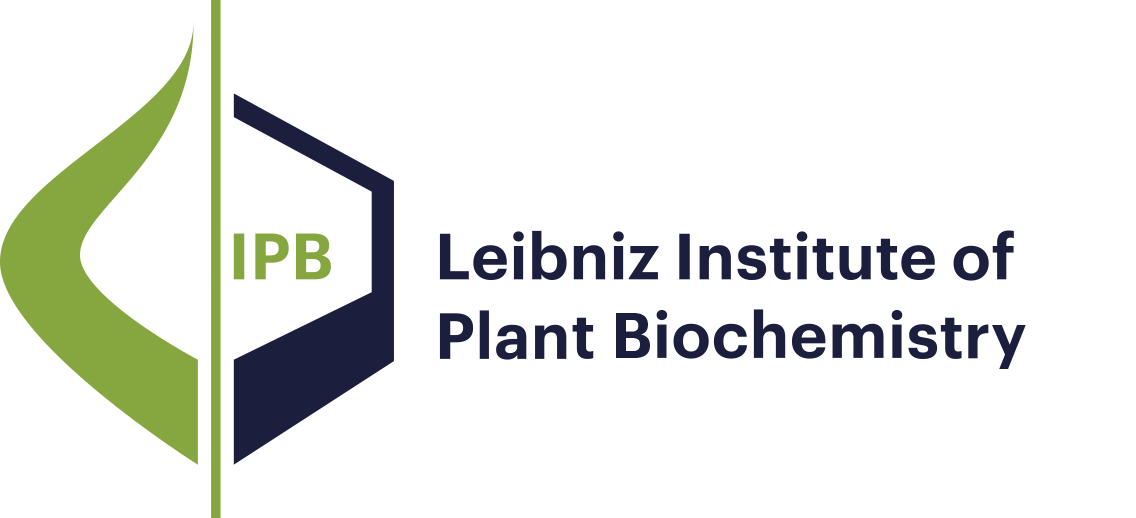- Results as:
- Print view
- Endnote (RIS)
- BibTeX
- Table: CSV | HTML
Publications
Publications
Publications
Publications
Publications
Publications
Publications
Research Mission and Profile
Molecular Signal Processing
Bioorganic Chemistry
Biochemistry of Plant Interactions
Cell and Metabolic Biology
Independent Junior Research Groups
Program Center MetaCom
Publications
Good Scientific Practice
Research Funding
Networks and Collaborative Projects
Symposia and Colloquia
Alumni Research Groups
Publications
Hygrophorone B12, a new antifungal constituent from the fruiting bodies of Hygrophorus abieticola, has been isolated and subsquently synthesized in enantiomerically pure form. The total synthesis includes a Sharpless asymmetric dihydroxylation protocol as the stereodifferentiating step, followed by two diastereoselective aldol‐type reactions. The approach allows the unambiguous control of all three stereogenic centres, and, furthermore, unequivocal determination of the relative and absolute configuration of antibiotic hygrophorones B for the first time.
Publications
In an endeavor to provide an efficient route to natural product hybrids, described herein is an efficient, highly stereoselective, one‐pot process comprising an organocatalytic conjugate addition of 1,3‐dicarbonyls to α,β‐unsaturated aldehydes followed by an intramolecular isocyanide‐based multicomponent reaction. This approach enables the rapid assembly of complex natural product hybrids including up to four different molecular fragments, such as hydroquinolinone, chromene, piperidine, peptide, lipid, and glycoside moieties. The strategy combines the stereocontrol of organocatalysis with the diversity‐generating character of multicomponent reactions, thus leading to structurally unique peptidomimetics integrating heterocyclic, lipidic, and sugar moieties.
Publications
In an endeavor to provide an efficient route to natural product hybrids, described herein is an efficient, highly stereoselective, one‐pot process comprising an organocatalytic conjugate addition of 1,3‐dicarbonyls to α,β‐unsaturated aldehydes followed by an intramolecular isocyanide‐based multicomponent reaction. This approach enables the rapid assembly of complex natural product hybrids including up to four different molecular fragments, such as hydroquinolinone, chromene, piperidine, peptide, lipid, and glycoside moieties. The strategy combines the stereocontrol of organocatalysis with the diversity‐generating character of multicomponent reactions, thus leading to structurally unique peptidomimetics integrating heterocyclic, lipidic, and sugar moieties.
Publications
A library of ten 1,3-diyne-linked peptoids has been synthesized through an Ugi four-component reaction (U-4CR) followed by a copper-catalysed alkyne homocoupling (Glaser reaction). The short and chemoselective reaction sequence allows generating diverse (pseudo) dimeric peptoids. A combinatorial version allows the one-pot preparation of, e.g., six-compound-libraries of homo- and heterodimers verified by ESI-MS and HPLC. In a preliminary evaluation, some compounds display moderate activity against the Gram-positive bacterium Bacillus subtilis.
Publications
Four new 11‐mer peptaibols, named albupeptins A–D (1–4), were isolated from cultures of the fungus Gliocladium album. Their structures were elucidated on the basis of 1D and 2D NMR spectroscopy, as well as ESI‐HRMSn analysis. The sequence of albupeptin A (1) was thus identified as Ac‐Aib1‐Aib2‐Val3‐Leu4‐Aib5‐Pro6‐Iva7‐Leu8‐Gln9‐Aib10‐Leuol11. Albupeptins B (2) and C (3) feature an exchange of Aib5 by Iva5 and of Aib1 by Iva1, respectively, and albupeptin D (4) contains both Iva1 and Iva5 residues. The stereochemistry of the isolated peptaibols 1–4 was unambiguously assigned by 1H NMR chemical shift analysis in conjunction with solid‐phase peptide synthesis. By using this approach, the absolute configuration of the Iva residues in albupeptins A (1) and C (3) was determined to be D, whereas albupeptins B (2) and D (4) feature an additional Iva5 residue with an L configuration. Thus, albupeptins B (2) and D (4) belong to the rare class of peptaibols that have both stereoisomers of Iva in the same sequence.
Publications
Metal-free 1,3-dipolar cycloaddition reactions have proven to be a powerful tool for the assembly of key heterocycles, in particular diversely functionalized 1,2,3-triazoles. A number of metal-free (3+2)-cycloaddition approaches have been developed up to date with the aim to circumvent the use of metal catalysts allowing these reactions to take place in biological systems without perturbation of the naturally occurring processes. This feature article specifically provides an overview of emerging metal-free synthetic routes, and their mechanistic features, in the formation of functionalized 1,2,3-triazoles.
Publications
Correction for 'Emerging approaches for the synthesis of triazoles: beyond metal-catalyzed and strain-promoted azide–alkyne cycloaddition' by Carolina G. S. Lima et al., Chem. Commun., 2015, 51, 10784–10796.

